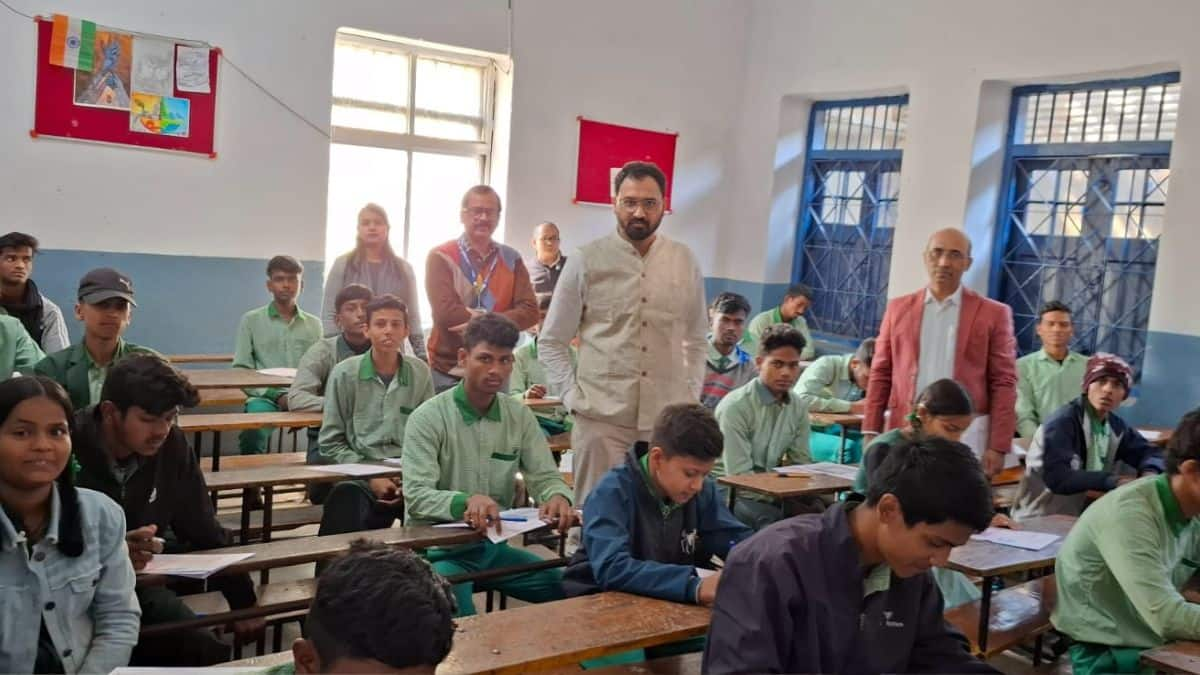PARAKH Rashtriya Sarvekshan 2024 result in July, shows NIPUN Bharat success
Shradha Chettri | June 13, 2025 | 01:27 PM IST | 4 mins read
Results of the PARAKH Rashtriya Sarvekshan, managed by a national assessment centre set up by NCERT, are ready and show foundational stage ‘working well’. 21.15 lakh students surveyed

The country’s top assessment body – Performance, Assessment, Review and Analysis of Knowledge for Holistic Development or PARAKH – is ready with the results of the Rashtriya Sarvekshan, which it conducted on December 4.
PARAKH’s CEO Indrani Bhaduri said, “The foundational stage is really working well, hinting at the successful implementation of the NIPUN Bharat Mission.”
She also shared that the results are likely to be declared next month, July 2025. The body is ready with the dashboards and the detailed insights gathered from the tests held across 781 districts. The PARAKH Rashtriya Sarvekshan 2024 was held for 23 lakh children enrolled in Classes 3, 6 and 9 in around 85,000 schools.
PARAKH Rashtriya Sarvekshan replaced the National Achievement Survey (NAS), conducted by the National Council of Educational Research and Training (NCERT) since 2001. Rashtriya Sarvekshan is a sample-based survey and the sample is representative of the size.
PARAKH is an independent assessment centre set up by the NCERT and was proposed in the National Education Policy (NEP) 2020.
The National Initiative for Proficiency in Reading with Understanding and Numeracy or NIPUN Bharat Mission was launched by the union government on July 5, 2021, under the aegis of the centrally-sponsored school education scheme, Samagra Shiksha Abhiyan. Its goal is to ensure the universal acquisition of foundational literacy and numeracy by Class 3 by 2026-27. Central government has been promoting the mission and has linked it with the goals of Viksit Bharat.
Also read Mid-day meal scheme loses 36 lakh children in a year; 19 states, UTs asked to review
PARAKH Rashtriya Sarvekshan results in 4 reports
The PARAKH Rashtirya Sarvekshan results will be analysed and presented in four different reports.
“There will be different reports for different stakeholders,” explained Bhaduri. “There will be a detailed report for teachers to help understand the competencies in which students are lacking.” The reports for teachers will also be an insight to bring in pedagogical changes.
Another report, intended for district-level officials, will reveal how districts are performing.
“Here, the functionaries will be provided details on the gender difference, the rural urban difference and also in terms of management of the school. It will be an important insight for them to formulate policies.” Bhaduri said.
The third report will be for state functionaries. “It will help them understand which districts are pulling the performance of the state down. They can also look at the best performances which can be replicated across the states,” said Bhaduri.
Here, too, analysis based on gender, school management and rural-urban differences will be provided in comparison to the national average. The national-level report will contain an overview of all the states, with all of them in participation.
PARAKH Survey: Way forward
With the results expected in July, PARAKH will next work on collaborating with the states.
“Now that for the first time we will have learning at the foundational, preparatory and middle stages, PARAKH will be working with states on how to improve upon it,” said Bhaduri. “First, there will be national-level workshops where the report would be shared. Then with the states and then at the district level. It will be a collaborative effort.”
What is the PARAKH Rashtriya Sarvekshan?
The PARAKH Rastriya Sarvekshan is a sampled research study, designed to take stock of learning achievement among school students at different stages.
The first edition of the sample study assessed students as per the pedagogical stages defined in the National Education Policy 2020:
Foundational: Till Class 3
Preparatory: Classes 4-6
Middle: Classes 7-9
It was competency-based and stage-specific, not grade-specific.
At the end of the foundational and preparatory stages – Classes 3 and 6 – the assessment areas are language, mathematics, and “the world around us” (TWAU). For Class 9, the areas include language, mathematics, science, and social science.
Thirty students were selected from each grade in a school – government, government-aided, central and private – for the test. The test was administered at over 85,000 schools across 781 districts of 36 states and union territories. The original plan was to hold it in 782 districts but “in one of the districts the study could not be conducted due to floods”, said Bhaduri.
It was conducted in 23 languages and covered close to 21.15 lakh children.
“We had observers at two levels. One set were the CBSE observers who were employed in each and every sample school. PARAKH had also deputed national-level observers, which even included officials from Niti Aayog,” said Bhaduri.
There were a total of 782 board representatives along with 38 national-level observers for monitoring the overall functioning and ensuring fair conduct of the survey.
Follow us for the latest education news on colleges and universities, admission, courses, exams, research, education policies, study abroad and more..
To get in touch, write to us at news@careers360.com.